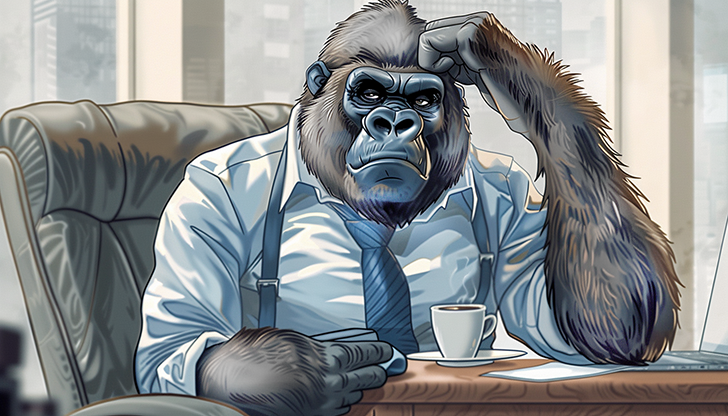
How to lose at gamification…
Recently, I was reminded of a time when a business team leader asked me to use gamification to create a dashboard system for several teams within a group. Now, I am not opposed to gamification as a rule. But like many tools used to motivate, I often see it being applied without understanding it, and using a tool you don’t understand is never advised.
What is Gamification?
It is the strategic attempt to enhance systems, services, organizations, and activities by creating similar experiences to those experienced when playing games to motivate and engage people.
Applying gamification to Team efforts can produce some good things. If you’re gamifying the software development process—Scrum Poker or a similar model—you’ll get some good results. Gamification encourages everyone to become a part of the process and enjoy what is often a stressful process of attaching metrics and making hard decisions by rendering it as points spent and used.
But this team leader wanted something else. He wanted to create a dashboard to show which teams were ‘in the doghouse’ during team review sessions and to literally ‘shame teams into better behavior.’
For everyone standing there with their mouths open… My personal experience is that this is a typical thought process for leadership regarding gamification that I have encountered over the years, not just in IT companies but with clients and vendor companies I’ve worked with in all aspects of business, talked to about teams, and provided coaching.
The vast majority of leaders out there are just as horrified at this story as you are. But, I have to be brutally honest here in pointing out that for many in leadership roles, competitive goal setting, or whatever name you care to apply, is a well-worn tool to get teams to accomplish goals. The end result of such ‘competitive’ metrics is that they produce what is effectively shaming teams to do better. So, for these leaders who ascribe value to competitive metrics, there isn’t a better way to describe the outcome other than shame, and so for them, shame is a valuable tool to accomplish goals even though they will argue that it’s not really ‘shaming’. The idea of using competition within teams, departments, and divisions is well-documented in our industry. It’s something that’s even considered a respected tool for your leadership toolbox when “used properly.” (Spoiler Alert: It isn’t a good tool, it never was, and there is no ‘using it properly’. There is no proper use for a toxic practice.)
Because of this, you can probably understand why I wasn’t shocked that, when I pushed back on the idea of using this to shame teams into better behavior, he rather firmly and somewhat indignantly explained they’d been doing this kind of ‘gamification’ before—and it worked well—and that a bit of shaming was a great motivator. It’s used by a lot of companies, and I should read up on it.
And while he’s saying this… in my head… I’m like…”I’ve been trained in this and have studied it for over a decade. It’s not a trendy thing for me.”

And, okay, to be 100% clear about this, if you’re in any leadership role and you can, in casual conversation, excuse shame as a great motivation technique, then you should do some personal work.
But aside from the shaming aspect—which is, let me repeat, horrendous—there’s another reason why gamification is not what you want in this scenario. You’re trying to get teams to clean up their messes. On the surface, making that a fun game sounds like a great idea, right? And if they had devised a game structure to do that – I might be okay with that. I can think of 3 or 4 different ways to gamify that behavior for individual and cross-org teams. The problem is – that gamification is a short-term result booster. It’s not a long-term gain in results.
But there’s no ‘game structure’ to a dashboard. It’s the outcome of a game. The scoreboard, if you will. So, whatever gamification you would be applying to a problem like this must occur before the dashboard.
You’d need to consider the areas that needed improvement, provide a process to improve those that the teams would work together on, and then establish for the teams how the metrics are tallied and applied—the ‘rules’ of the game. So, my advice is not to build the scoreboard before you build the game. When you build the game, build it on a clear understanding of what you want to achieve – and how you want that achieved by teams – and consider ways to use the game structure to have teams get added points for working together or assisting other teams to achieve things. Once you know the goals of the game, the variables, and how you want the players to behave – you can look at scoreboards and reward structures to achieve the goals.
But even then, even if you have a good gamification concept, a process, and can avoid shaming and encourage team building…. There’s another aspect of gamification that needs to be considered. It’s the fact that the more complex a system is, the more effort it takes to maintain it, and the more effort involved in something, the more it becomes ‘work’ and not a game.

Consider what happens when the “new” of the wonderful gamification system you’ve put together… wears off… And trust me, if I have learned nothing in the last 20 years, the “new” will wear off quickly. Then, when everyone is suddenly too busy to shame everyone else if you’ve built it poorly – or work if you’ve built it well, one day, on whatever review or team reporting call where you go over the scorecard or dashboard… It will be decided to set the “shaming report” section of the call aside, just for a while, because — an emergency came up. You know the reasons, “There was an extended fire drill”, or “A plague of locusts rose in the east”… You know, the usual reasons for dropping an activity that the teams don’t see enough benefit from to keep doing it, without being shamed into it… that reason. Which, ironically, is the reason you wanted to gamify it in the first place.
The bottom line is that it will stop being a priority. When that happens, you’ll still have the problem. Sure, you fixed it for a week or two when people watched. But once they don’t, it’s not a priority now. And that is the real problem with gamification in this scenario: It’s not very strong at fixing behaviors that aren’t ‘fun.’ Statistically speaking, it seldom provides a long-term fix to problems.
That said, let’s get back to discussing gamification and its strengths and weaknesses for you to use in the future.
I’m going to steal from some online sources here – to provide a breakdown of the good, the bad, and the ugly points and see if we can figure out what gamification is strong at.
- The Good:
- Engagement and Motivation: Gamification can enhance engagement and motivation by incorporating points, badges, and leaderboards. When done right, it encourages desired behaviors and fosters a sense of achievement.
- Performance Focus: Effective gamification centers around performance outcomes rather than the learning process. For instance, earning badges can be motivating.
- The Bad:
- Misaligned Behavior: Sometimes, gamification leads to unintended consequences. Instead of promoting learning or productivity, participants may focus solely on accumulating points or badges, which can undermine the original goals.

[ This is the single most common problem I’ve seen with the gamification of teams. When you build a system where you need more or less points, pips, or dings than the other teams, the focus becomes on the points – not the problem you are trying to fix. Or worse, you will see teams ‘gaming’ of the gamification system, where teams will do anything to clear that negative value from the board – including dumping bad results or recoding them so they don’t appear in the reports. This is, essentially, cheating at the game. Which, honestly, is to be expected. Cheating in games – is a common malady. It’s naturally going to happen here because you built a game, and when it does, it means you can no longer trust the data you’re using to produce results. ]
- Competition and Exclusion: Gamification often introduces competition, creating winners and losers. Those who don’t win may feel devalued or disconnected from the team or organization.
- Poor Design: Many gamified applications fail due to inadequate design. Understanding game mechanics and aligning them with desired outcomes is crucial.
- Misaligned Behavior: Sometimes, gamification leads to unintended consequences. Instead of promoting learning or productivity, participants may focus solely on accumulating points or badges, which can undermine the original goals.
- The Ugly:
- Expensive Implementation: Implementing gamification can be resource-intensive in terms of time and costs.
 [Side Note that applies here: The effort needed to build the “Dashboard of Shame” that had been asked of me was more work than if I’d just collected all the queries of work items needing to be fixed properly — and sent emails to the teams to fix them. I also could have just automated the process of using the queries to locate problem items – and automatically sent emails to those who needed to fix those items. Both solutions were faster, less intensive, and did not require all the teams to sit in a meeting for 10-15 minutes being shamed. Not all costs and expenses … are in $$$.]
[Side Note that applies here: The effort needed to build the “Dashboard of Shame” that had been asked of me was more work than if I’d just collected all the queries of work items needing to be fixed properly — and sent emails to the teams to fix them. I also could have just automated the process of using the queries to locate problem items – and automatically sent emails to those who needed to fix those items. Both solutions were faster, less intensive, and did not require all the teams to sit in a meeting for 10-15 minutes being shamed. Not all costs and expenses … are in $$$.] - Superficial Engagement: Sometimes, gamification remains a superficial overlay without truly enhancing the learning experience.
- Creative Overload: Overly complex interactions can slow down task completion and hinder productivity
- Expensive Implementation: Implementing gamification can be resource-intensive in terms of time and costs.
So yeah, gamification can be a powerful tool when thoughtfully applied, but it requires careful consideration and alignment with organizational goals to avoid many pitfalls.
And that’s just the more generalized uses of it as a process. In this case, there is a general disconnect in what “Gamification” is.
“Gamification” IS NOT just having a report with Red / Green, and anyone in the Red is “bad,” and anyone in “Green” is good. There is no ‘game’ there. It’s just shaming teams.
And gamification should – and I can’t stress this enough – NEVER be used to shame or denigrate in any way one person, group, or team over another. Period. If you’ve used the word “shame” in a sentence applying to team leadership methods… you’ve already lost any game you were playing.
